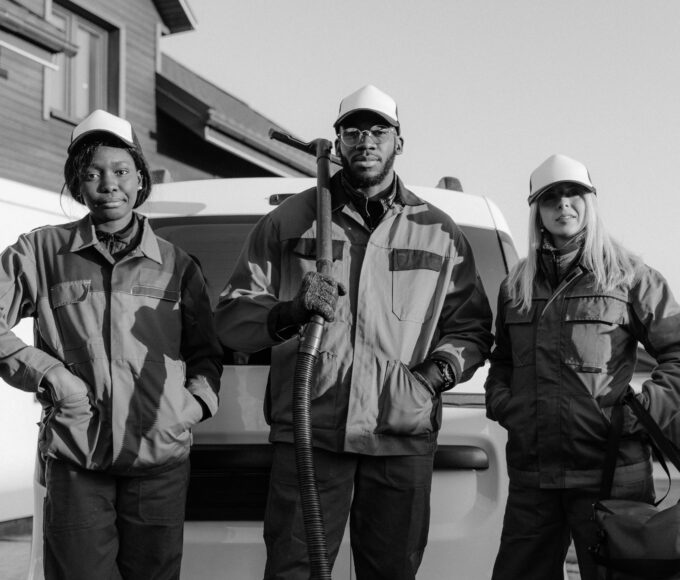Getting started on a construction project often feels like taking on something new and unfamiliar. While it feels great to start making your ideas real, there is often a lot of uncertainty and problems to handle. No matter if you are starting a new project or renovating, you need to plan out your steps and think through each choice. It’s at this stage that JVK and Sons is there to help, making it simple to turn your plans into reality.
Overseeing the details of construction, choosing the right people, costing out the project, and dealing with sudden obstacles is essential for achieving success at each phase. Let’s see how you can move through the whole process while enjoying it step by step.
Understanding the Construction Process
It is important for anyone starting a project to understand how construction works. Ideas are first shaped and blueprints made during a phase of careful planning. Making a sketch demonstrates your goals to all the participants.
After the planning phase is over, the pre-construction phase begins. During this phase, a site review and a feasibility assessment are carried out to confirm the project fits with regulations and the environment.
During construction, communication becomes vital. Meeting with the team on a regular basis ensures everyone is working towards the same goals and can handle any challenges instantly.
There are also several phases like digging, constructing the foundation, wiring, and completing the project, all calling for good attention to details.
Knowing these different steps gives you more power and boosts your confidence as you move forward in designing your own game.
Choosing the Right Contractor and Team
Selecting the right contractor matters a lot for achieving success in your project. Start by doing thorough research. Find companies, such as JVK and Sons, that have a positive track record in the area.
You could get advice from your friends or family members. Things people have gone through can give you useful insights into the possible contractors you meet.
After making the list, look at each person’s past artworks. Go through some of the previous designer’s work to check that they are a good fit for your needs.
Always check out online feedback from other users. Google and Yelp are two examples of places where you can read what past clients have to say.
Personally meet with potential employees to see how they communicate and behave. You should look for a contractor who acts on your ideas and also gives you expert recommendations.
Make sure that whichever company you choose is both licensed and insured. This helps protect both parties during the process and gives them a chance to trust one another from the beginning.
Creating a Budget and Timeline
Creating a budget and timeline for your construction project is important so you can see how much things will cost and how long they will take. Start by listing out every cost you might have to pay for the new product or service. This includes things like work done by workers, the supplies needed for the job, any permits you might need, and any extra costs that might come up during the building process.
Once you know how much money needs to be spent, make a budget that you can realistically stick to. Factor in a contingency fund so you can deal with any unexpected issues that come up during building. A good rule of thumb is to keep about 10-20% of your total budget to help cover unexpected costs.
Next, develop a detailed timeline. Break the project into different steps, like designing, getting the permits, and actually building, and give a deadline for each one. Consider that bad weather or problems with getting supplies could slow things down.
Regularly look at both your budget and timeline as the project goes along to make sure everything is on track. Staying flexible makes it easier for you to adjust if something unexpected comes up so you can still keep moving toward your goals.
Effective communication with everyone involved helps make changes with fewer problems if something has to change along the way. Prioritize open and honest communication between team members so everyone knows what’s going on and can work together well from the beginning to the end.
Obtaining Necessary Permits and Approvals
Navigating the world of permits and approvals can be frustrating, but it’s something you really need to do if you want your construction project to move forward. Each municipality has its own rules and things you need to follow. Researching these early on helps you get things done more quickly.
Start by reaching out to your local planning office to get advice and find out what you need to do. They will give advice on things like zoning rules and what paperwork you need to get for your project. Many areas need you to get a building permit to make sure the work is safe.
Don’t overlook environmental regulations either. Depending on where you are, you might have to get some extra permission if you’re close to places or rivers that need special protection.
Prepare all required documents meticulously. Missing paperwork can really slow things down and throw off the project timeline.
Engage with neighbors as well; they might tell you about similar projects that were made here before, and they could also list some problems that people sometimes see when getting approval for these projects. Building relationships with people early can help you start off on the right foot and make it easier to work with community members when you need to ask their opinion or approval.
Managing Materials and Supplies
Navigating the world of permits and approvals can be frustrating, but it’s something you really need to do if you want your construction project to move forward. Each municipality has its own rules and things you need to follow. Researching these early on helps you get things done more quickly.
Start by reaching out to your local planning office to get advice and find out what you need to do. They will give advice on things like zoning rules and what paperwork you need to get for your project. Many areas need you to get a building permit to make sure the work is safe.
Don’t overlook environmental regulations either. Depending on where you are, you might have to get some extra permission if you’re close to places or rivers that need special protection.
Prepare all required documents meticulously. Missing paperwork can really slow things down and throw off the project timeline.
Engage with neighbors as well; they might tell you about similar projects that were made here before, and they could also list some problems that people sometimes see when getting approval for these projects. Building relationships with people early can help you start off on the right foot and make it easier to work with community members when you need to ask their opinion or approval.
Navigating Changes and Challenges
Projects in construction can sometimes take an unusual or unexpected course. Change in the plans, problems at the site, or weather issues can happen at any stage, so it’s important to be flexible.
Preparing for possible changes helps make us feel less stressed. Keeping your contractor and team informed helps everyone keep track of the tasks at hand. If you have regular check-ins, you can take care of problems as soon as possible.
Consider challenges as opportunities to better yourself, rather than things that hold you back. Each challenge teaches important lessons that will be useful in planning and carrying out future construction projects.
With JVK and Sons on your team, the experience and advice of proven professionals are available to help through the challenges. Their backing makes it easier to handle changes and maintain your vision for the project.
Working on a new project should inspire you with its potential and chance for fresh ideas. Inform yourself, form a good support group, and meet every obstacle or challenge with courage. This will help ensure that your project moves forward smoothly from the planning phase to being built.
















